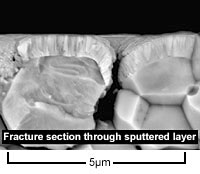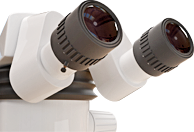Cross-Sectional Preparation and Analysis
 Cross-section preparation is a very powerful way of examining how a material, laminate or component is assembled, manufactured, for determining how different layers interact or in the hunt for the mechanisms causing a failure. In all of these cases it is vital that any cross-section preparation does not disturb, smear or alter the sample otherwise the wrong conclusions can be reached. The choice of the technique to generate the section, therefore, is vital as is the skill and experience of the individual preparing the sample, particularly when samples are scarce.
Cross-section preparation is a very powerful way of examining how a material, laminate or component is assembled, manufactured, for determining how different layers interact or in the hunt for the mechanisms causing a failure. In all of these cases it is vital that any cross-section preparation does not disturb, smear or alter the sample otherwise the wrong conclusions can be reached. The choice of the technique to generate the section, therefore, is vital as is the skill and experience of the individual preparing the sample, particularly when samples are scarce.
LPD Lab Services has a diverse range of polishing and cross-section preparation equipment. The skill in careful preparation stems from many years of work on micro-engineering and reverse engineering.
Types of cross-section include:-
- Polished cross-sections of metals, glasses, ceramics and coated materials.
- Fracture cross-sections of brittle materials and materials that undergo a ductile-brittle transition.
- Scalpel cut cross-sections of soft materials such as polymers and laminates
 Cross-sectional analysis can be used for a range of different reasons and the samples inspected by Optical Microscopy or SEM / EDX. Features on calibrated images can be measured and quantified manually or by image analysis.
Cross-sectional analysis can be used for a range of different reasons and the samples inspected by Optical Microscopy or SEM / EDX. Features on calibrated images can be measured and quantified manually or by image analysis.
Cross-sections can be, for example, used for:-
- Determination of coating thickness or coating continuity.
- Metallurgical and failure investigation.
- Inspection for settling out of filler materials in painted coatings.
- Metallographic sample preparation inspecting for the presence of different metallurgical phases, defects or porosity.
- Measurement of the extent of interlayer mixing and diffusion in laminated or coated structures.
- Physical failure analysis looking for cracks or evidence of failure initiation sites for mechanisms such as fatigue, corrosion, stress corrosion cracking, poor cleaning practices, buried interfaces, weak boundary layers, etc.
- Component assembly inspection and reverse engineering.
- Weld assessment and weld failure analysis.

